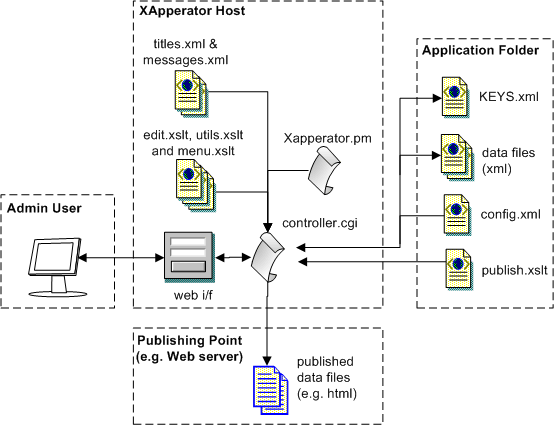
XApperator
lightweight, manouverable and quickly deployed
XApp has the following key components and resources:

An admin user requests the controller.cgi script from the hosting XApp web server. The controller script loads the XApperator.pm perl module then takes submitted CGI parameters from the users FORM and generates an appropriate UI depending on the contents of those CGI vars
If the user has selected a record for editing the controller loads the appropriate data xml file from the Application folder and possibly writes the changed data back out to the same location
When presenting data to the user for editing XApperator passes it and the application's config.xml file through the editing xslt transforms that ship with XApperator. The edit.xslt file is responsible for generating all UI content where controller.cgi is simply a bridge between the User and the XML
When the user is ready to publish the record file XApperator takes the publish.xslt file from the application folder and renders the XML data through it out to the publishing location specified in the application's config.xml file
If view mode is enabled in the config file data can be dynamically presented to the user by pushing it through a custom xslt file you might create. This is an alternative to statically publishing to the file system, but you should consider performance on bigger data sets
If search mode is enabled in the config file an ordinary html form can be pointed at a controller script tweaked for searching (one is included in the demo app) and XApperator will crawl through the records in the XML files checking for the search phrase in fields which are marked as searchable in the config file for the app.
If XML mode is enabled in the config file the raw XML data file will be echoed out to the web user directly with no XSLT transform at all.
Authored using: XApperator